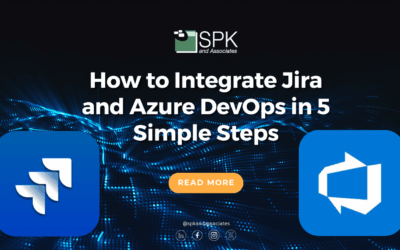Google Workspace is a collection of tools designed to enhance productivity and collaboration. Formerly known as the G Suite, these cloud-based tools come in a variety of plans tailored to organizational needs. With new advancements in technology come new IT trends for Google to follow. Let’s dive into these Workspace trends for 2024.
Google Workspace
Google Workspace consists of multiple documentation tools such as Google Drive, Docs, Sheets, Slides, Notes, and Forms. In addition to these, Google has communication and organizational tools like Google Meet, Calendar, and Chat. Google also has its own website builder, Google Sites. All of these tools help organizations collaborate to produce efficient work. Additionally, Google has tools to manage user accounts, protect data, and ensure compliance. Let’s explore how Google Workspace supports current and future IT trends.

Google Workspace Trends
1. Cloud Migration and Hybrid Work
Ever since the pandemic, businesses have been migrating to the cloud to adapt to the rise of remote work. Businesses heavily focus on ensuring the cloud-based applications and data storage solutions they use are optimized and aligned with their needs. As Google Workspace is all cloud-based, businesses don’t have to worry about migrating to the cloud. Remote and hybrid workers have a flexible work environment they can easily access from anywhere. Implementing Google Workspace tools allows for more flexibility and growth.

2. Network Management
The rise of cloud services has emphasized the importance of efficient network management. Businesses are prioritizing ways to effectively manage all workflow components. Google Workspace provides several tools that facilitate network management such as its centralized admin console. Users can efficiently manage all aspects of the workspace from anywhere. This includes user accounts, devices, security settings, and network configurations.
3. Omnichannel Customer Experience
Recently there has been a push for seamless integration between multiple channels. Businesses need their tools to work together to prevent configuration issues. Google Workspace is a great resource to provide this integration as all Workspace tools are designed to work with each other. These tools provide businesses with a consistent experience across all platforms.
4. Low-Code Technology for Employee Empowerment
In addition to omnichannel experiences, there’s a growing interest in low-code development platforms. These platforms enable employees with little to no coding experience to build applications and solutions. Fortunately for Workspace users, Google offers its own low-code development platform called Google Appsheet. Appsheet allows users to build applications without writing code. Instead, they use a visual editor to design apps by configuring components. Additionally, Appsheet integrates with other data sources like Google Sheets and Excel to enhance productivity.
5. AI and Machine Learning Integration
It’s evident from nearly every platform that Artificial Intelligence is on the rise. Google Workspace is no different and will be integrating AI into their tools. They have already announced how their AI tool Gemini will be used to create templates. In addition to this, Google will likely utilize natural language processing to create better communication tools and automate routine tasks, allowing users to focus on more demanding tasks.

6. Improved Security and Privacy Measures
With increasing concerns around data security and privacy, Google Workspace has prioritized its security protocols. Users can ensure their data is safe in the cloud however, there are some ways to ensure extra safety. Cybersecurity threats do still exist and businesses must understand these cybersecurity risks and take action against them.
All of these IT trends reflect the shifts in technology and work culture. They aim to make all platforms more secure, efficient, and user-friendly for the future.
Implementing Google Workspace
If your business wants to keep up with the digital transformation of the field, you may want to implement Google Workspace. If you don’t know where to start, SPK’s experts can handle the setup, configuration, and management of Google Workspace accounts for you. This allows your business to focus on production. If you would like to get started with Google Workspace, contact us today.







